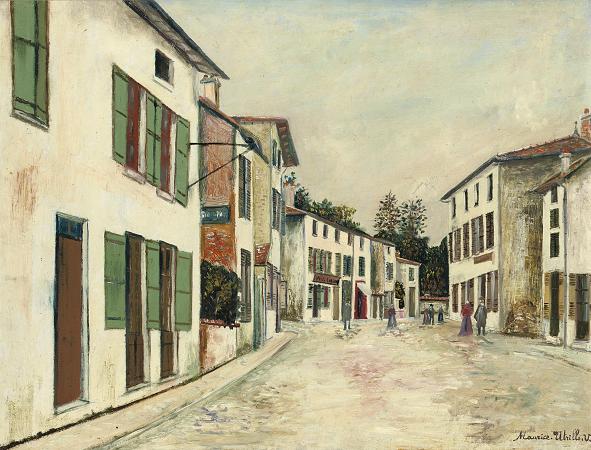Landscape with Village. A village is a clustered human settlement or community, larger than a hamlet but smaller than a town, with a population typically ranging from a few hundred to a few thousand. Though villages are often located in rural areas, the term urban village is also applied to certain urban neighborhoods. Villages are normally permanent, with fixed dwellings; however, transient villages can occur. Further, the dwellings of a village are fairly close to one another, not scattered broadly over the landscape, as a dispersed settlement. In the past, villages were a usual form of community for societies that practice subsistence agriculture, and also for some non-agricultural societies. In Great Britain, a hamlet earned the right to be called a village when it built a church. In many cultures, towns and cities were few, with only a small proportion of the population living in them. The Industrial Revolution attracted people in larger numbers to work in mills and factories; the concentration of people caused many villages to grow into towns and cities. This also enabled specialization of labor and crafts, and development of many trades. The trend of urbanization continues, though not always in connection with industrialization. Historically homes were situated together for sociability and defiance, and land surrounding the living quarters was farmed. Traditional fishing villages were based on artisan fishing and located adjacent to fishing grounds. In toponomastic terminology, names of individual villages are called Comonyms. The soul of India lives in its villages, declared Mahatma Gandhi at the beginning of 20th century. According to the 2011 census of India, 69% of Indians live in 640,867 different villages. The size of these villages varies considerably. 236,004 Indian villages have a population of fewer than 500, while 3,976 villages have a population of 10,000+. Most of the villages have their own temple, mosque, or church, depending on the local religious following. Main article: Pakistani village life The majority of Pakistanis live in rural areas. According to the 2017 census about 64% of Pakistanis live in rural areas. Most rural areas in Pakistan tend to be near cities, and are peri-urban areas, This is due to the definition of a rural area in Pakistan being an area that does not come within an urban boundary. Village is called dehair or gaaon in Urdu. Pakistani village life is marked by kinship and exchange relations. Main article: Aul Auyl is a Kazakh word meaning village in Kazakhstan. According to the 2009 census of Kazakhstan, 42.7% of Kazakhstani citizens live in 8172 different villages. To refer to this concept along with the word auyl often used the Slavic word selo in Northern Kazakhstan. People's Republic of China Main article: Village In mainland China, villages are divisions under township or town. Republic of China Main article: Village In the Republic of China, villages are divisions under townships or county-administered cities. The village is called a tsuen or cun under a rural township and a li under an urban township or a county-controlled city. See also Li. Japan Main article: Villages of Japan South Korea Main article: Villages of South Korea Main article: Villages of Brunei In Brunei, villages are officially the third-and lowest-level subdivisions of Brunei below districts and mukims. A village is locally known by the Malay word. They may be villages in the traditional or anthropological sense but may also comprise delineated residential settlements, both rural and urban. The community of a village is headed by a village head. Communal infrastructure for the villagers may include a primary school, a religious school providing or Islamic religious primary education which is compulsory for the Muslim pupils in the country, a mosque, and a community centre.
more...













